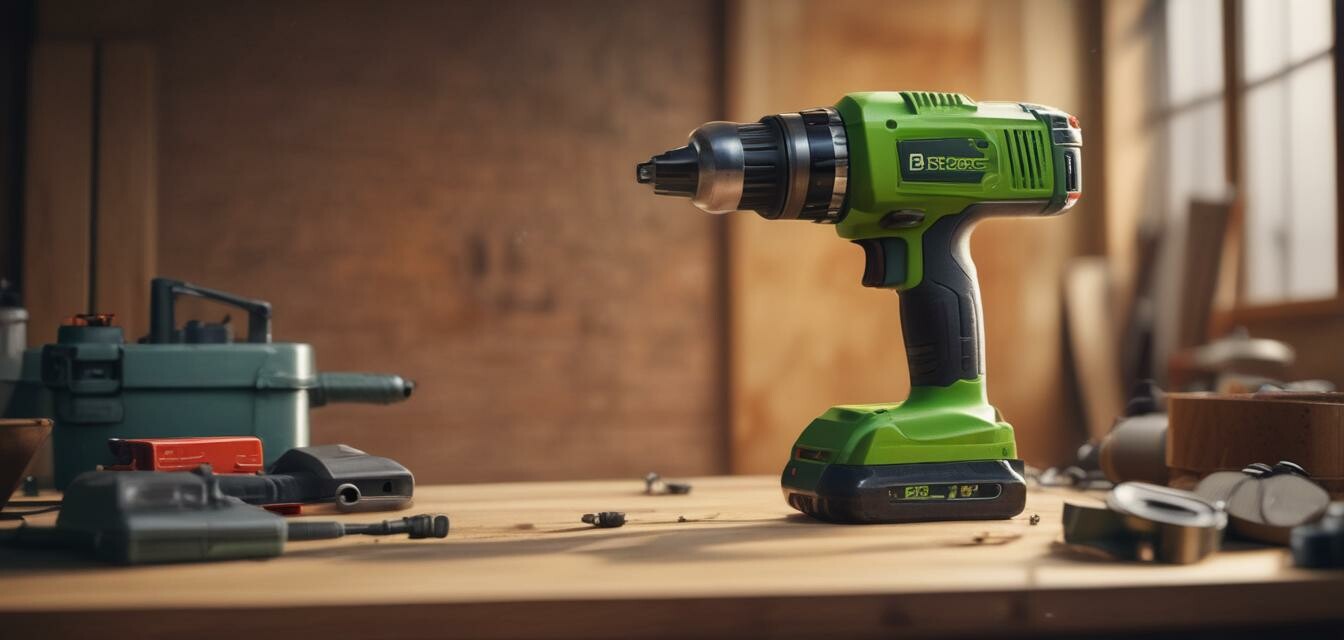
Sustainable practices in power tool manufacturing
Key takeaways
- Power tool manufacturers are increasingly adopting eco-friendly materials.
- Energy-efficient processes reduce the carbon footprint in production.
- Recycling programs help manage waste and promote sustainability.
- Consumer awareness has driven the shift towards demand for sustainable tools.
- Innovative technologies are paving the way for greener power tools.
The power tool industry is undergoing a significant transformation towards sustainable manufacturing practices. As concerns about environmental impact grow, manufacturers are stepping up to adopt eco-friendly processes, materials, and technologies. This shift not only appeals to environmentally conscious consumers but also contributes to the overall health of our planet. In this article, we will explore the various sustainable practices adopted by power tool manufacturers, highlighting their importance and the potential for a greener future in the industry.
1. The importance of sustainability in the power tool industry
As the global climate crisis intensifies, industries around the world are being called to action. The power tool sector, known for its resource-intensive manufacturing processes, is no exception. Sustainable practices are vital for reducing the industry's carbon footprint and conserving natural resources.
Impact on consumers and businesses
With growing consumer awareness of sustainability, buyers are increasingly seeking eco-friendly products. This demand drives manufacturers to innovate and adapt their practices, creating a beneficial cycle for both the environment and their business model.
2. Eco-friendly materials
One major component of sustainable practices is the shift towards using eco-friendly materials in the production of power tools. Manufacturers are exploring biodegradable options and recycled materials while designing tools that are just as durable as conventional options.
Examples of sustainable materials
| Material Type | Usage | Environmental Benefit |
|---|---|---|
| Recycled plastics | Tool housing | Reduces landfill waste |
| Biodegradable composites | Handles | Lower environmental impact |
| Reclaimed metals | Internal components | Conserves natural resources |
3. Energy-efficient manufacturing processes
Reducing energy consumption during the manufacturing process is another key strategy for sustainability. Many power tool manufacturers are implementing energy-efficient practices such as:
- Using renewable energy sources like solar and wind power.
- Investing in advanced machinery that consumes less energy.
- Optimizing operational processes to minimize waste and energy use.
4. Recycling and end-of-life programs
As power tools reach the end of their lifespan, manufacturers are also focusing on recycling programs to handle waste effectively. These initiatives include:
- Take-back programs that allow consumers to return used tools for recycling.
- Partnerships with recycling facilities to ensure proper disposal and recycling of materials.
- Creating tools that can be easily disassembled for recycling purposes.
5. Emerging technologies for sustainability
The shift towards sustainability is being fueled by emerging technologies that can improve performance while being eco-friendly. Some innovative technologies include:
- Smart tools: Connectivity features that optimize energy usage.
- Battery advancements: Longer-lasting, efficient batteries that reduce waste.
- 3D printing: Reducing material waste in manufacturing.
6. Challenges in implementing sustainability
While the moves towards sustainable manufacturing are impressive, challenges still remain. Some common obstacles include:
- Higher production costs associated with eco-friendly materials.
- Skepticism from consumers regarding the durability of sustainable products.
- Logistics and supply chain complexities involved in sourcing sustainable materials.
Conclusion
The power tool industry is at a pivotal moment in its journey towards embracing sustainability. By adopting eco-friendly materials, reducing energy consumption, instituting recycling programs, and leveraging innovative technologies, manufacturers are paving the way for a greener future. This transition not only benefits the environment but also appeals to a growing market of consumers who prioritize sustainability. As we look forward, the power tool industry is poised to lead the charge in promoting sustainable practices, ensuring that tools for contractors and DIY enthusiasts can continue to make a positive impact on their projects and the planet.
Pros
- Reduced environmental impact.
- Cost savings in the long run due to efficiency.
- Enhanced brand reputation among eco-conscious consumers.
Cons
- Initial costs of implementing sustainable practices can be high.
- Consumer skepticism may hinder adoption.
- Sourcing eco-friendly materials can be challenging.
Further reading
For those interested in exploring more about the power tool industry, check out our other articles:
